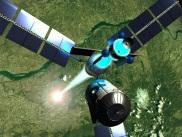Interesting, thanks. It's a little frustrating that so many years after the Wii, we're not much further forward!
There is not much reason to push for good motion controls as they are generally too laggy and inaccurate for good gaming experiences (with a few exceptions, like dance games). Not to mention that most players don't want to stand up and move when they can stay seated and move their fingers instead.
I have no developer knowledge of the WiiMote, only gaming experience that says it's erratic even with the MotionPlus - games frequently tell you "lie the controller flat for 5s if it stops working right" though which suggests it has fundamental flaws. Could anyone comment on how the controllers mentioned compare?
The Wii MotionPlus is a relative motion sensor using accelerometers. It has no idea it's absolute position in space, only a guess from relative movements you've made to the controller (absolute positioning can be estimated with the assistance of the camera on the front of the remote and other creative use of the sensors). Because it is relative, it will eventually drift over time. This will happen with any similar system (like the PS Move)
Razer's Hydra (and the creator's subsequent product in development) use magnetic sensors and a transmitter so it can be incredibly accurate and precise, but has range limitations and can be vulnerable to interference.
The Kinect and other visual systems generally will be accurate, but they can only infer certain kinds of information and have lag issues as image processing is not a fast process. They cannot obviously measure anything they do not have direct line of sight to either - though for things like body parts they can guess based on the position and orientation of connected parts (i.e. guessing where your hand is because it can see your arm)
How good is Kinect for this kind of thing - having to detect which part of you is your hand as well as things like hand orientation?
The Kinect can give you
an entire skeleton with bone positions and orientations.










